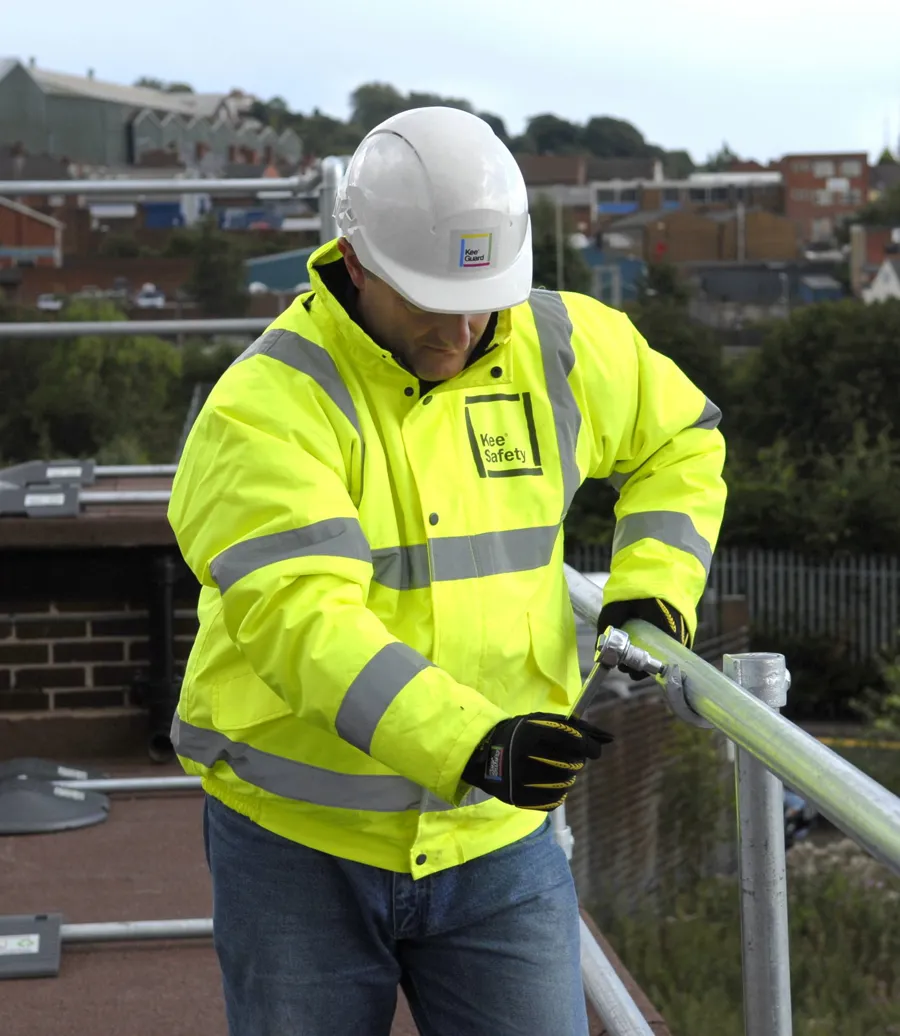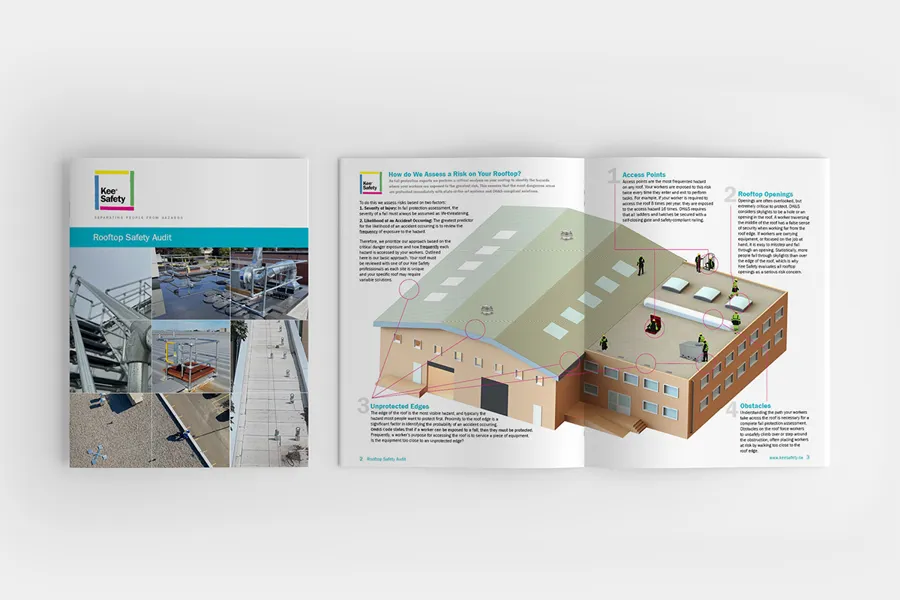
You are visiting the Canada Kee Safety website from United States. Would you like to go to the United States site?

The prospect of an “audit” would normally scare the bejeebers out of an organization, especially if coming from the Canada Revenue Agency (CRA).
Indeed, the primary definition of an audit is examination and verification of financial accounts. However, another definition of an audit is “the inspection or examination of a building or other facility to evaluate or improve its appropriateness, safety, efficiency, or the like.”
Rooftop inspections and maintenance are fundamental parts of building management. Workers spend more time on rooftops than many people realize. They service HVAC units, clear drains, remove snow, monitor solar panels, electrical systems, and communications towers, and perform other tasks.
Unfortunately, every rooftop visit brings significant fall hazards, and fall hazard prevention in Canada is a safety concern and regulatory responsibility.
Under national and provincial Occupational Health & Safety (OHS) regulations and standards such as CSA Z259, protecting workers at height is mandatory. A structured Canadian workplace safety audit ensures your facility meets roof fall protection compliance requirements, reduces risks, and prevents costly accidents. Such analysis enables facility managers to identify common hazards
Start by inspecting all rooftop areas where falls could occur. Typical compliance gaps include:

Any edge 10 feet (3.6 metres) above a lower level requires protection. There are no exceptions. Even workers performing quick inspections are vulnerable.
A plastic panel or corroded sheet metal may appear solid but can fail if a worker steps on it. Skylights are technically “holes in the roof” and often cannot support the weight of a worker.
Emerging from a hatch without a proper roof hatch safety system exposes workers to a fall risk within seconds, and an unprotected hatch opening is a constant fall hazard.
If workers climb over pipes or equipment to reach service areas, there is a significant risk of a trip and fall.
If a certified anchor system is not in place, then rooftop safety compliance is severely compromised.
Once hazards are identified, address them with engineered solutions designed to safeguard workers and bolster efficiency.

Install strong, durable, corrosion-resistant perimeter safety railings that do not penetrate the roof. They offer passive, collective protection for everyone on the roof, with no harnesses or training required. Different systems are available for various roof types and layouts.
Skylight protection systems allow sunlight to shine through and prevent workers from falling through these fragile openings. They are non-penetrating and corrosion resistant.
Workers are at risk during egress and ingress. Roof hatch kits are non-penetrating systems that surround these openings to protect workers. They feature two key components:

Whether traversing a cluttered rooftop or reaching for control panels on elevated equipment, workers need stable surfaces that enhance both safety and efficiency.
Where guardrails and other passive systems are not feasible, active fall protection—harnesses, lanyards, and lifelines—is required to prevent workers from reaching a hazard or to stop a fall quickly. Active systems require certified anchorages.

Fall hazard prevention in Canada is a major priority, and installing fall protection equipment is only part of achieving rooftop safety compliance. A comprehensive program includes:
A qualified assessment identifies fall hazards and forms the foundation of a compliant safety program.
The selection of site-specific systems and equipment with professional installation ensures optimal safety and workflow integration.
Workers must be trained on specific active systems installed, rescue plans, and recognizing work-at-height hazards.
Regular inspection by a competent person ensures ongoing compliance with CSA standards and provincial regulations.
Rooftop work will always involve some level of risk, but with the right systems and processes, those risks are manageable. A structured safety audit identifies hazards and the fall protection measures to safeguard workers, ensure compliance, and bolster efficiency.
Kee Safety Fall Protection Experts perform a critical analysis of the entire rooftop surface to identify the hazards where workers are exposed to the greatest risk. This ensures that the most dangerous areas are protected immediately with state-of-the-art fall protection systems and OH&S compliant solutions.

How do We Assess a Risk on Your Rooftop?
Kee Safety Fall Protection Experts perform a critical analysis of the entire rooftop surface to identify the hazards where workers are exposed to the greatest risk. This ensures that the most dangerous areas are protected immediately with state-of-the-art fall protection systems and OH&S compliant solutions.